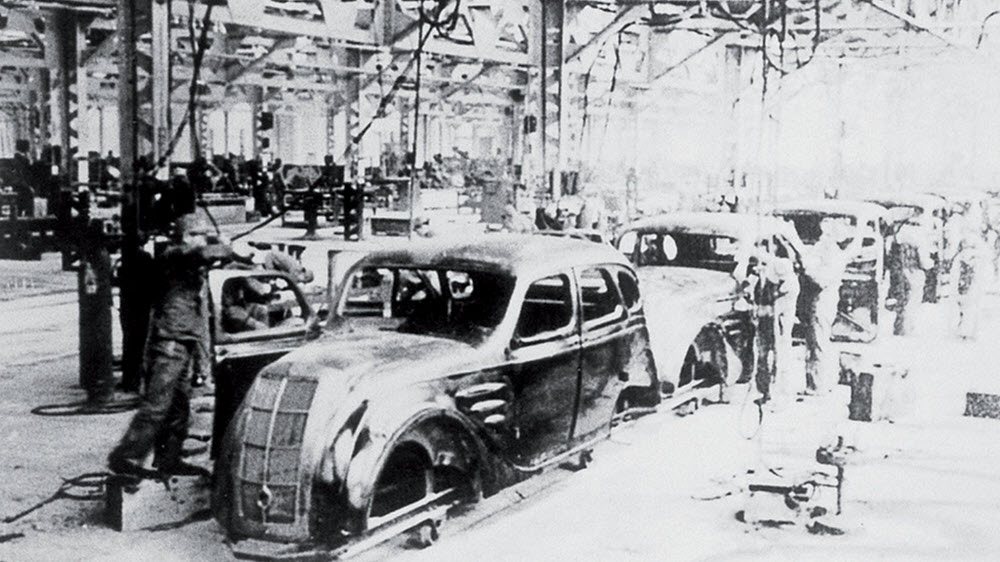History of Quality 1930-40s
The history of quality starts when a statistical control chart was invented by Dr. Walter Shewhart in the 1930s. This chart along with other quality controls was adopted by the USA in World War 2 for production of military supplies in bulk quantities with high quality. The UK also used the same for their military equipment.
During WW2 the US navy did a survey to check the techniques of best manufacturers for producing their products. Afterwards, they published and distributed a list of best practices all over the country specifically to USA’s manufacturing bases. This list is generally considered as the first standard for quality assurance in the history of quality. The Americans also made Z-1 sampling plan, quality standards, that were adopted by major manufacturers. Similarly, quality standards were followed by the UK as British Standards 1008.
Japanese used the methods of 100% inspection as a quality control technique; it was in fact 80% reliable in terms of military production. But these techniques were far behind the US quality standards. Many people say that it is the reason why the Japanese lost the war; as their military equipment were inferior to the Allies.
At the end of the war, there was a break down in the manufacturing industry of Japan because it was producing sub-standard goods and equipment. The US occupation helped Japan to recover from an industrial break down as they enforced the modern quality standards and practices list. A number of experts were sent to Japan for training the Japanese manufacturers regarding quality controls and techniques.
After the World War 2, Japan took quality assurance standards to a higher level. Japan formed the Japanese Industrial Standards Committee (JIS) in 1946. This committee initiated JIS standards and permitted certified JIS companies to bear the JIS mark.
The JIS mark was considered as the primary certification of quality management standard. The participation of Japanese firms was voluntary. To obtain the JIS mark, it was essential to have a certification inspection.
From Dr. Demming, Dr. Juran and other Quality Control specialists, Japan stopped the old practices inspection to ship a higher quality product. Instead, they adopted the latest quality controls in their manufacturing processes. In this way, they got rid of producing inferior quality products.
In order to produce superior quality products, quality assurance standards must be enforced at the start of development and throughout all divisions of the organisation. This includes producing, procuring, marketing, sales, safety, human resources, IT and so forth.
History of Quality 1950-60s
In 1950, the Japanese Union of scientists and Engineers (JUSE) got training from Dr. Demming. He provided coaching on topics of PDCA cycle, statistics and also the use of quality control charts and standards regarding manufacturing, process control, and administration activities; all tools with the focus on enhancing quality.
In the 1950 and 1960s, the USA was a leading country in the manufacturing world. The competition was merely between US companies. Due to small competition, USA manufacturing moved away from certification management and statistical quality control standards were not essential.
During the 1970s, the US military developed two quality standards, Mil-I-45208 and Mil-Q-9858A for inspection and insisted their vendors to follow these standards. The inspectors of the military would visit or work at manufacturing plants to assure that the quality management systems were working appropriately.
History of Quality 1980-present
In the 1980s the world moved towards global trade. Nations and manufacturing industries were required to agree upon quality assurance standards. The quality assurance standards would help in enhancing the trust between various companies across the globe.
As a result of international trade, the US again started to follow the statistical control quality and management systems. In the 1980s, the emergence of theories of total quality management (TQM) further improved the US manufacturing practices.
Another major development in the history of quality was the adoption of ISO 9000 standard series by 91 nations being a member of the International Organisation for Standardization (ISO). In 1994 the ISO 9000 series was updated to an ANSI/ISO/ASQ standard and USA companies could become certified to the standard.
Now, ISO 9001 is an internationally recognized quality management standard which is used as the benchmark for many companies.






